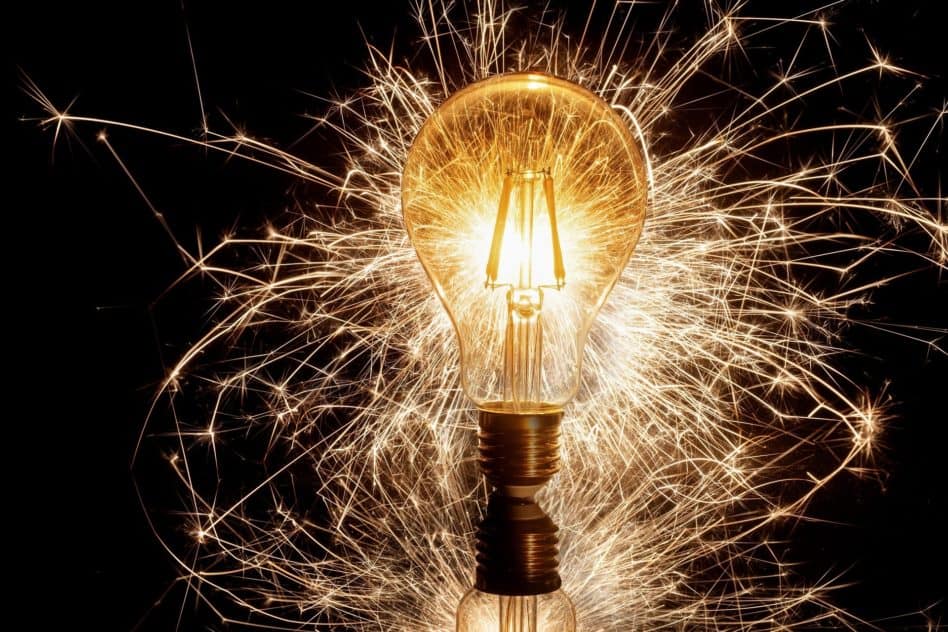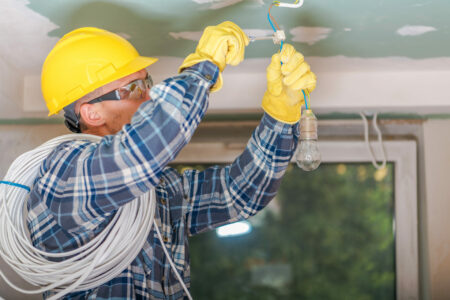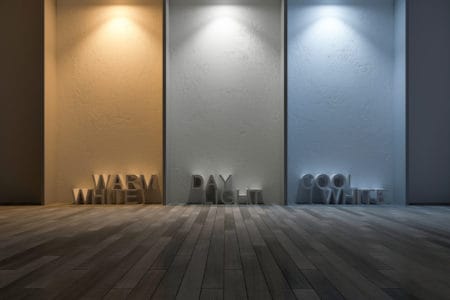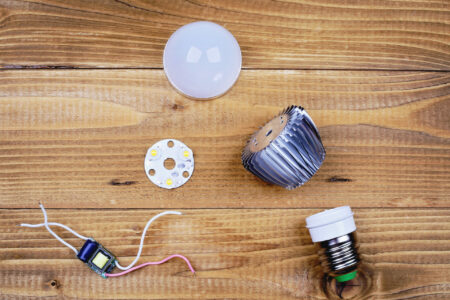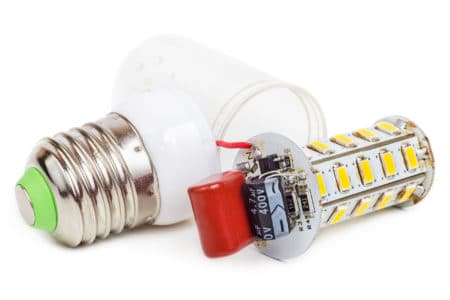Are you still using incandescent bulbs for lighting up your home? These old bulbs get very hot when touching them. If you are still using them you are missing out on many advantages that LED bulbs can offer you over the incandescent ones. But the main question is, if these LED bulbs also get hot? The short answer is: No, LEDs stay cool. Read on if you want to know why LED lights don’t become hot.
Do LED Light Bulbs Get Hot?
When it comes to tungsten filament bulbs, having bulbs with a wattage of 100 watts means that it can only generate 10 watts of light. And the rest of the 90 watts will just be heat. This is why incandescent bulbs become very hot and it becomes impossible to touch them without waiting for them to cool down.
However, when it comes to LED bulbs, you will often come across the popular fact about them that they do not become hot. So, is it really true? Well, we can say that it is correct to some extent. You will be able to touch LED bulbs easily as they do not generate IR radiations that can turn them hot to touch, unlike incandescent bulbs.
No doubt that LEDs are far more efficient as compared to the tungsten bulbs, but they also do produce some heat as well. If you choose to buy a 10 watts LED bulb, the output of light is up to 8 watts while the rest of the 2 watts will be heat energy. The following comparison will let it be easier for you to understand the difference:
- With 10 watts of input, the LED bulb can give an output of 8 watts and generate 2 watts of heat
- With 15 watts of input, the LED bulb can give an output of 12 watts and generate 3 watts of heat
- With 100 watts of input, the tungsten filament bulb can give an output of only 10 watts and generate 90 watts of heat
LEDs can Become Hot in Some Fixtures
LED bulbs have integrated heat sinks so their minimal heat can be absorbed into the environment. But when you install LED light bulbs in enclosed fixtures this becomes difficult. As result even the LED would become hot over time and also operates with a decreased efficiency.
What is the Lifespan of Hot LED Bulbs?
Are you concerned about the lifetime of your LED bulbs when they get hot? It is undeniable that LED bulbs are relatively efficient. However, the generation of heat can change this fact. Due to the heat that these light bulbs produce, the efficiency can get immensely compromised.
The temperature of the surroundings and parts of the bulb, like the lens and LED driver, are responsible for affecting the temperature at the junction of the LED. LED lights possess a lot of parts inside them to change the electricity from your home’s outlet to the lower voltage that is responsible for running the LED chips. This factor makes the LED bulbs far more heat-sensitive than other lights such as incandescent bulbs.
If you have bought relatively inexpensive LED bulbs, there is a high chance of them coming with a caution regarding the use. The warning forbids you to place these bulbs in entirely closed fixtures. In such enclosed fixtures the LED bulbs would become very hot which would decrease their lifespan.
Using enclosed fixtures is only favorable when you have bought a high-quality bulb that comes with a warranty tag. Usually, the LEDs are not prone to get burnt out. However, heat can reduce the quality of light they produce. The dullness that takes place throughout the time span is known as light degradation.
How To Prevent Light Degradation In LED Bulbs?
For the prevention of light degradation, LED bulbs come with integrated heat sinks in them. This component is responsible for absorbing the generated heat so that it does not have adverse effects on the efficiency of the bulb. The placement of heat sinks makes these lights last longer than incandescent bulbs.
Hot Incandescent Bulbs vs LEDs
Sticking to the old incandescent bulbs won’t remain as a choice as most of them are being terminated. Hence, opting for LEDs will become a must for you. However, before setting off to purchase, there are many factors that require your attention.
What Are LED Bulbs?
LED stands for Light Emitting Diode. These devices are semi-conductors in nature, work by giving out visible light whenever electric currents get passed through them. LED bulbs are capable of showing far more efficient working than incandescent bulbs. Relatively they have the potential to show more than ninety percent of efficiency in their functioning.
Lumens instead of Watts
Incandescent bulbs were mostly rated in watts. The higher the wattage, the brighter their light output is. The brightness of LED lights is measured in lumens. And due to physics the higher their lumen output the more likely the LEDs will become hot.
How Do LED Bulbs Work?
Do you know why the invention of LEDs initiated innovation and advancement in this world? Well, it is due to the inexpensive production of light that you will be able to get through them. LEDs have successfully modified the whole industry for the better, and this technology’s possible uses are unlimited.
The working of these bulbs is quite simple as well. In simple words, the small LEDs fitted in these bulbs lighten up whenever the microchip of these lights senses the passing current. LEDs produce light premised on the diode’s P-N junction.
Conclusion
It won’t be entirely true if we say that the LED bulbs do not get hot at all. Just as all electrically-powered devices, LED bulbs also generate some heat. The difference is that the generated heat is too low that they do not even become too hot to touch. But you need to pay attention when selecting the right fixtures for your bulbs. In fully enclosed fixtures the little heat would accumulate and as a result even the LED bulbs would become hot.
